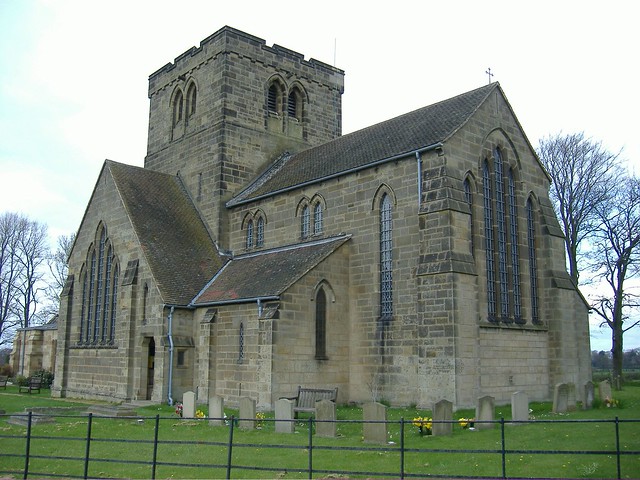The long lull between the designing and the building of this handsome small church bears witness to the loss of Temple Moore’s son in WWI.
Temple Moore designed St Mary's in 1914, with the help of his son and apprentice Richard, whom he hoped would take over his practice upon his retirement. Richard was called up in 1916. On his way home to England on leave in 1918 he was killed in the torpedoing of the SS Leinster. He was 25.
St Mary's was not built until two years later, in 1920. After Temple Moore's own death on 30th June that year, his son-in-law Leslie Moore took over his practice and completed his work at Nunthorpe.
Although Temple Moore didn't live to see it completed, St Mary's is imbued with the sure touch of his later work. Particularly characteristic of this period is the positioning of the chancel at a higher level than the nave. The chancel also has a clerestory, which the nave lacks.
Comparing the population of Nunthorpe in the 19th century with that of neighbouring Middlesbrough, gives a stark impression of how the industrial revolution affected this area. They were both small villages in 1831, Nunthorpe with 125 people and Middlesbrough with 154 people. Seventy years later in 1900 the change was astonishing. Nunthorpe now had a population of 198, but Middlesbrough, swollen by the growing coal, iron and steel industries, had grown to 91,302.
Nunthorpe has the distinction of having its own nuclear fallout shelter, near Tree Brigg farm. It dates from 1963, when the government of the day set out to build 870 shelters with 17 regional administration centres.
Another notable Gothic Revival building in Nunthorpe is Grey Towers House. It was designed by John Ross of Darlington for the ironmaster William Randolph Hopkins between 1865 and 1867. From 1895 to 1931 it was the home of the industrialist Sir Arthur Dorman. Dorman was a partner in Dorman Long, the company that designed and built the Sydney Harbour and Tyne bridges. The iron came from the ironstone mines of the North York Moors.
